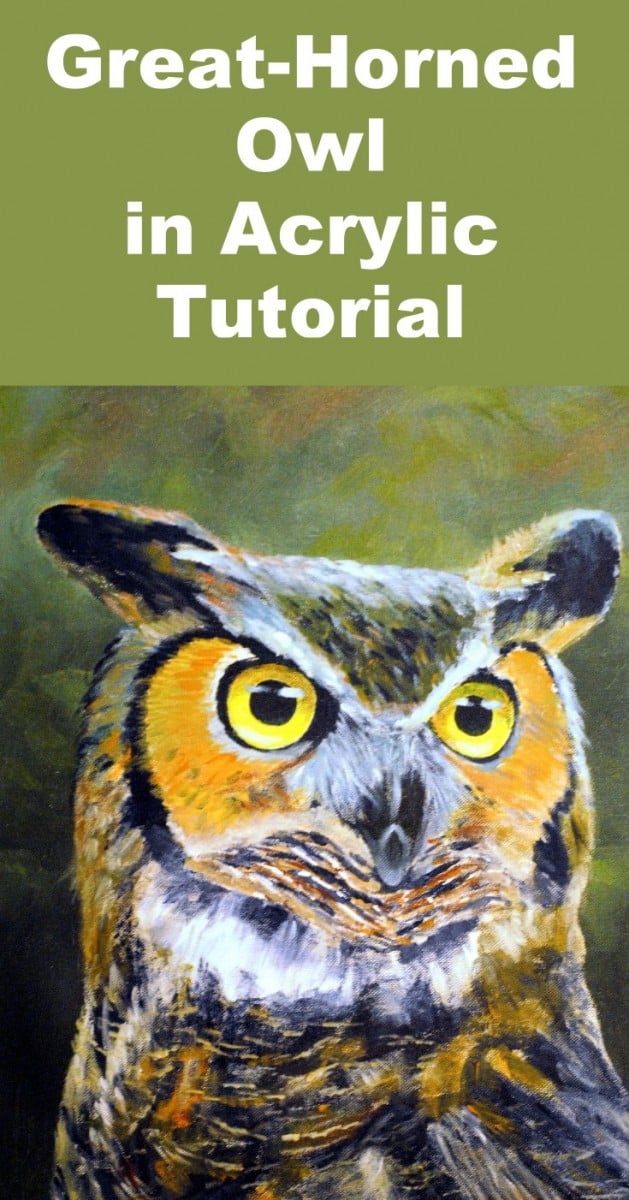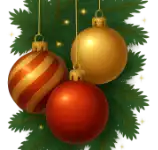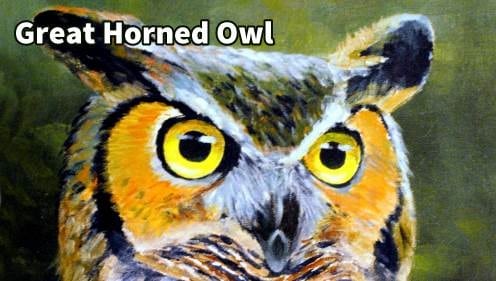Short Class Video
Class Tutorial
Paint the background
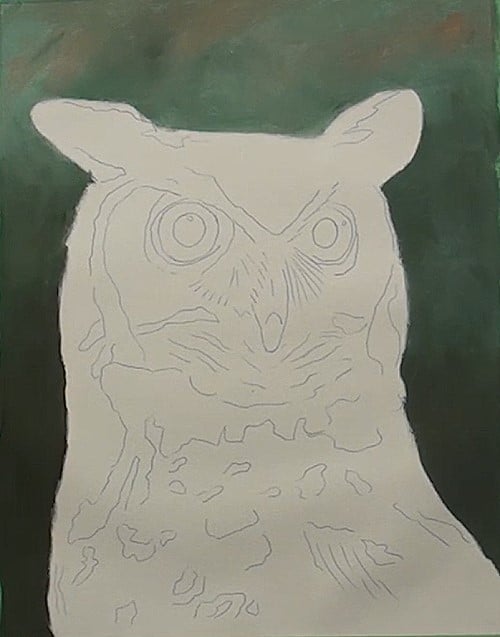
In order for the owl to stand out, mix a very dark green from Viridian and Burnt Sienna and carefully paint around the outline of the image. Make it slightly lighter near the top for interest.
Paint the eyes
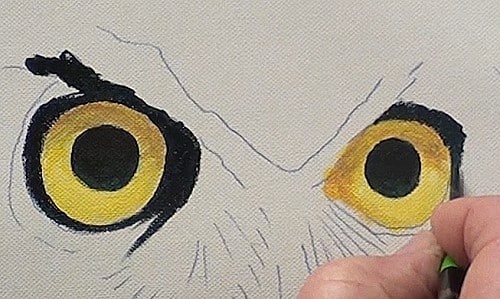
Paint the irises with a light yellow and then with a very dark mix, paint the pupils. To show the translucency of the eye, lighten the lower part of the iris with White. Because of the overhanging eyebrows, add the shadow on the eye with some Yellow Ochre. The iris is not yellow enough so brighten it up with a mix of Yellow and White. With the same dark mix as the pupil begin to paint in the dark areas around the eyes. Now we can see we need to darken up the shadows on the eyes even some more.
Paint the eye highlights
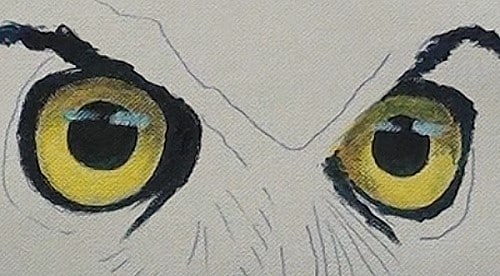
The highlights on the eyes in the photograph are as a result of a flashlight. We will add highlights that corresponds to natural outdoor lighting. This will be light blue for the sky reflection.
Paint the beak
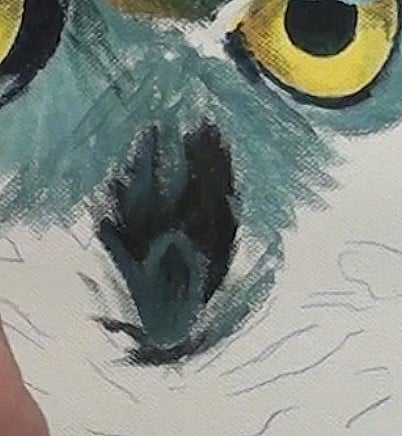
The beak is painted with the dark mix, with a touch of white for the lighter areas.
Painting the face
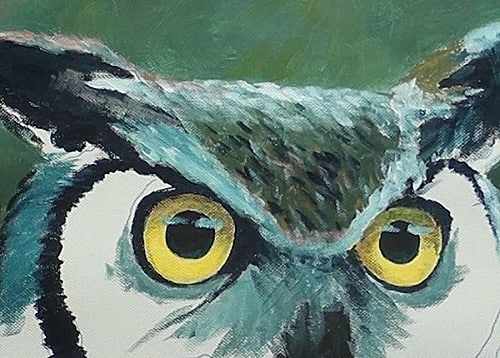
The top of the head has a slight green tinge to it, so lighten up some of the background color and paint in the various tonal ranges with a small flat brush to give the impression of all the small feathers. Don’t forget to match the direction of the feathers to the photograph. Continue blocking in the very dark areas and lines in the face and ears and forehead.
Now we can add the lighter areas. I guess you have already noticed that we are not keeping to exactly the same colors as in the photograph. We are matching it to the the reflection from the dark green background. All your brush work in the painting will be small strokes to match the feathers and markings.
A touch of orange is added for the brown areas on the ears. The color of the cheeks is Yellow Ochre with a touch of white and green. A touch of orange is also added in to warm up the color a bit.
With a sideways stroking of the flat brush add the long straight feathers around the beak.
Paint the chin
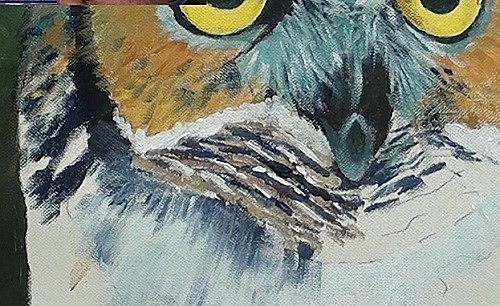
Make a blue/black mix (similar to Paynes Grey) using Ultramarine Blue and Burnt Sienna. Notice that the feathers around the chin are standing straight up, facing towards you. First paint in all the dark shadow areas. The flat brush is well suited for this. With a round brush fill in the areas with some of the mix used for the cheeks. The highlights are added on with white paint.
As we progress, look to where you can improve in the recently painted areas. Sometimes we need to balance the one side to the other.
Continue finishing off the other side of the chin area, and then some more touch-ups are needed, as we compare these markings to those in the photograph.
Paint the breast area
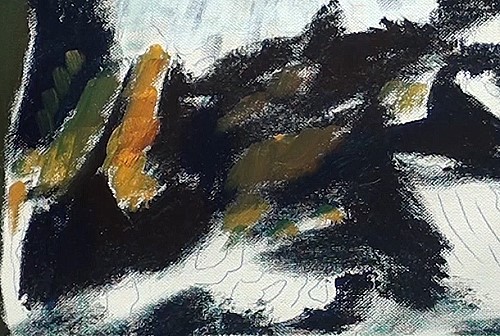
Roughly block in all the dark areas on the chest. Each bird differs so we are not going to try and copy them exactly. We just need to give the proper impression of the feathers.
Use Yellow Ochre here for the fill-in areas. Use the flat brush with short downward strokes to simulate the many flat feathers. Blend the colors in slightly to form a reasonably united appearance. We must first build up a background of tonal ranges before we add some detail to it.
Painting the wing
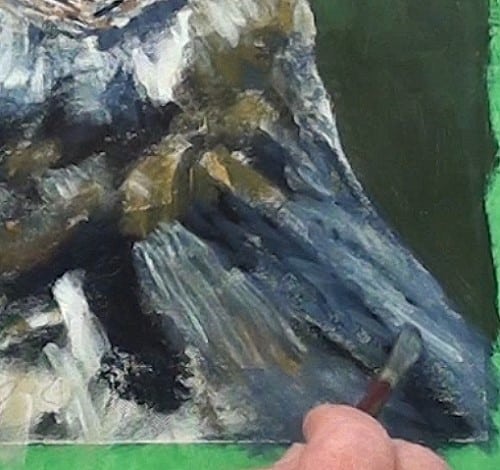
The wing area is painted with some of the blue/black mix and white to bring out the gray color on the wing. The body is actually side on and the owl has its head twisted towards us.
Paint the body
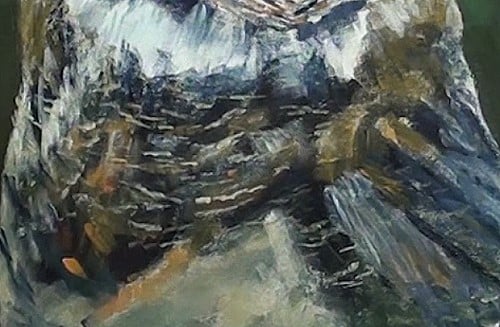
Using the flat brush, similar to how we painted the chin area, we can now begin tapping in all the feather parkings. These marking must follow the contour of the body to show the rounded shape of the body.
Finish off all the final markings with a small round brush.
Final painting
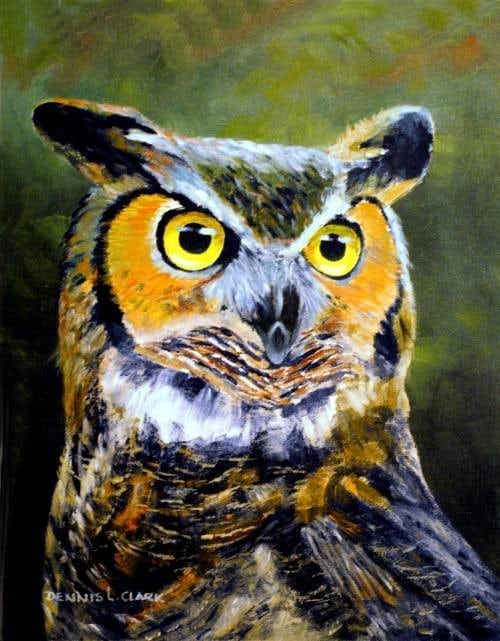
Click the button below to view the real time follow along version of this class:
Pin Me
